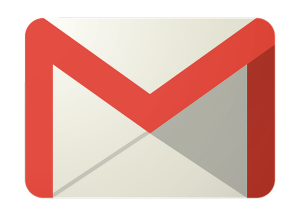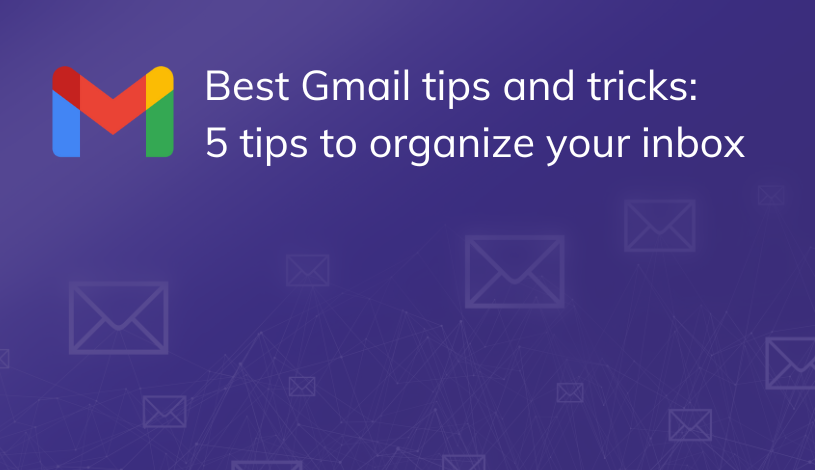Gmail 101: A User Guide
One of the most popular webmail services on the market, Gmail was introduced in 2004, and became public in 2007.
Replacing previous email software, Gmail was one of the first web-based email providers that automatically offered 1GB of storage, and now offers 15GB of free storage with every new account.
Gmail was also a pioneer of the “thread” style inbox, and this revolutionary email client also introduced the use of labels instead of the traditional folder structure.
Gmail lets you send and search for messages, organize your inbox, and build relationships with integrated chat and video calls.
In this article we provide an in-depth guide to Gmail, covering many of the key features users will love and exploring tools and customizations that both beginners and advanced email users will love to take advantage of. Let's get started.
Gmail 101 Table of Contents
- Key Gmail Features
- Using Gmail in a Web Browser
- Gmail Action Buttons
- Automatic Translation in Gmail
- How to Organize Your Gmail Inbox
- Email Signatures
- Gmail Security & Backing Up Data
- Managing Multiple Gmail Accounts
- Logging Out of Gmail Remotely
- Gmail Hangouts Conversations
- How to Load Gmail Faster
- Enabling Desktop Notifications in Gmail
Gmail Features
Let's begin by covering a few of the key features available to users in Gmail that help to set it apart from other email clients. While this is not in any way an exhaustive list of Gmail features, we feel these are some of the most useful and most noteworthy Gmail features:
- Storage: Although Gmail provides 15GB of free storage for its free accounts, for G Suite paid users there is a much larger storage capacity. Basic members receive 30GB, while Business and Enterprise users receive 1TB (per user) for organizations with less than 5 users, or unlimited storage for those with over 5 users.
- Threads: Emails are automatically grouped when based upon the same original subject line. This means that emails are organized and you will not see two messages, for those which are in the same conversation. Instead they will be placed one above the other so you can see the entire conversation at once.
- Virus Checking features: There are free anti-malware and anti-virus scanners that are already installed and up to date. Even if malware or a virus is able to sneak into a message, Gmail will display a warning and quarantine the message.
- Spam: Although a few messages may sneak through, the spam filtering in Gmail is one of the best available.
Gmail in a Browser
Gmail can be accessed in any browser, but Gmail specifically recommends their own Google browser, Chrome.
When you open Gmail in a browser, it's easy to search through your inbox or other mail boxes by typing into the search box at the top and hitting enter. While basic inbox search is powerful (Google is pretty good at search, after all), they also offer enhanced Gmail search options. Simply press the arrow next to the search box to access these. This will allow you to search your messages in a more advanced manner such as: From, To, the subject, contents of messages, attachments or date range.
Action Buttons

In Gmail, there are a few common actions that can be performed using the action buttons at the top of your mail, under the search bar.
These actions include:
- label,
- delete,
- mark as spam, and
- archive.
The select button is the first button on the left. This allows you to select or deselect all messages whether they are unread, read, starred or unstarred. Next, the archive button allows you to archive your messages. This removes them from your main inbox, and places them into your archive folder to read later -- a powerful tool to keep your inbox decluttered.
The hexagon action button with an exclamation point in the center is to report spam. This button helps to report spam when a few pieces of junk mail have slid through Gmail's poweful spam filter and helps to insure that you won't see messages from that sender again. If you accidentally mark something as spam and want to reverse the action, go to your spam, select the message and click Not Spam, at the top of the page.
Next, there is the Delete button, which looks like a little trash can. Whenever you delete messages they will be sent to the Trash. They're accessible for 30 days if you make a mistake, but after 30 days in the Trash folder these messages will be automatically deleted.
Similar to the Labels button, the button with a Folder on it is the Move To, menu. Here you can choose to move any message into a folder or label that you create.
The Labels button is next to the Folder button, and this button allows you to create categories for your emails, without moving them into a different folder. This way you can organize within a folder as well.
Automatic Translation
If you happen to be doing business internationally, or even just writing to a friend who speaks a different language, the different virtual keyboards and IMEs (input method editors) available will surely help you. These keyboards and IMEs allow you to communicate in different languages. IMEs have a latin alphabet, and convert your keystrokes to characters in different languages.
The transliteration input tool changes your phonetically English words into the correct alphabet. There is also a handwriting tool which allows you to write with your mouse or trackpad, to translate what you are saying. In order to use this, click the keyboard button in the top right corner of the screen, under the share button, or press Ctrl+Shift+K (on a PC) / Cmnd+Shift+K (on a Mac).
Setting up Input Tools for International Communication
With Gmail’s virtual keyboards and IMEs (input method editors), you can communicate easily to people who speak different languages.
To access these settings, press the keyboard button, then Settings from the menu. To turn these tools on, select Enable input tools, and then check the box in the Language section at the top of the General tab. There will also be different icons to the left of the input tools to indicate the different types. When you see an icon that is a character from another language, that indicates that this tool is an IME.
The handwriting input tools are marked by a pencil icon, and the keyboard indicates a virtual keyboard.
Customize Your Gmail Settings
Directly next to the keyboard icon are your settings. Here you can change display settings, access themes and get Gmail help.
Organize Your Gmail Inbox

One of the best features of Gmail by far, is the ability to organize your inbox by labeling emails.
There will be a variety of default labels, but you do also have the ability to use custom labels (which I recommend - it's a great way to add personality and customize your inbox).
After organizing and labeling your email contents, you will be able to see how many messages are in each label, indicated by the number between parentheses next to each label.
Click on any label to reveal all messages associated with it. You can also label one message with multiple labels, such as "Marketing Team" and "From the Boss."
Use the All Mail label as your archive. Move read messages that you would like to keep, into your inbox, and then label them with the All Mail, label which means they will never be deleted. This can help you to reduce clutter, because instead of keeping them in your inbox, they will be placed into a folder to keep them out of site. When you use this label, anytime you make a search through your messages, these will also be included in the search.
One great feature of labels is the ability to use colors to distinguish them. To assign different colors to different labels, simply click the arrow to the right of any label. This will help you to access the options for that label, which includes changing the color. You can also use this menu to show and hide that label either in the message list or label list, edit and remove labels, as well as add a sub-label. You'll be surprised how adding a color-coded system to your inbox can transform the way you work.
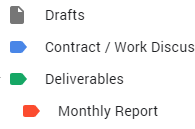
Smartlabels
Gmail has a Smartlabels feature with a little help from AI. After a bit of setup, you will be able to have Smartlabels classifying your email automatically, applying labels, and removing specific types of email from your inbox such as Bulk or Forums.
Organizing Messages in your Inbox
Organizing your inbox will greatly improve productivity. In your inbox you will see all messages that you have received, read and unread. All messages will be in here that you haven't moved to a label or sent to be archived. Unread messages will be differentiated from read messages by their white background, and bold lettering. Read messages will have a gray background and normal font.
Changing the Style of Your Inbox
Since every person organizes things differently and likes to deal with email in a different way, Gmail allows you to change the style of your inbox. To view these options click the arrow to the right of the Inbox label, and select a different style from the drop down menu. As you place your mouse over the different options you will see a description of each type, and whichever style is currently selected will have a check mark next to it. The messages in your inbox will not be affected by switching the style, it will simply change the order that the messages are listed.
Staring Messages

The use of stars in your inbox will indicate certain messages as Important. You can use stars to indicate messages that you need to reply to later and find quickly. To do so, click the star which will be to the left of the sender’s name. You can also select More, and then Add Star, if you have the message open. Not only can you add stars, but you can also add exclamation points or check marks by changing your preferences in settings.
Attachments and Calendar Invitations
Since Gmail integrates with both Google Calendar and Google Drive, you can easily see when a message contains an attachment or invitation. This will be visible by an icon to the right of the subject line. For an invitation there will be a calendar icon, and for an attachment, a paperclip icon. If you would like to add an attachment, you will have up to 25MB of space per email. If it is larger than 25MB you can insert files from your Google Drive.
Email Signatures
Email signatures are automatically included at the bottom of each email to sign off in a professional or creative way.
To set up a signature, click the settings gear button and select Settings from the drop down menu. Stay on the General tab and go down to Signature.

There will be the ability to select No signature, or the option below, which allows you to create your signature in a dialogue box.
You can also add a logo by inserting it as an image, or a hyperlink as text by clicking the Link button on the toolbar.
Related: How to Insert an Image in Gmail Sigature [Step-by-Step]
Security and Backing Up Data
Gmail consists of email, contacts, calendars and tasks, so it is safe to say that a lot of your personal information is saved in Gmail.
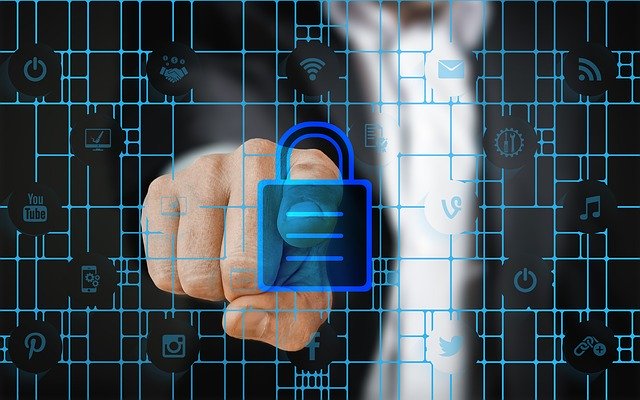
Keeping your Gmail password private is the first step to securing your personal information. To change your password, notification settings or recovery options for if you happen to lose your password, go to the Security section of Accounts. Accounts can be found by clicking the Settings button, and selecting settings from the list. Then click Accounts along the top of the Settings screen.
Next you should see the Change Account Settings, section which is where you can change your password, password recovery options and other Google Account settings. Changing your password every once in a while is a good idea, especially if you think someone may have access to your accounts. It is also highly recommended to have your mobile phone number or a recovery email submitted, in case you forget your password.
Two-Step Verification is also an option to add an extra layer of security to your Gmail account. For this you will need to have a mobile phone. This is because every time you sign into your Google account, after you enter your password you will be sent a code on your mobile phone. You must take this code and enter it on the next screen.
Related: G Suite Email Encryption Guide
For backing up your data, you will have the ability in Gmail to export a copy of all your Google data. This will include Calendar, Contacts and messages. To do this, you click Settings, select Settings from the menu, Accounts, and then the link, Google Account Settings. Next Download your Data, under Account. Next, a screen titled: Download a copy of your data, will appear. Click “Create an archive,” and your data will begin downloading into your archives.
Images
You have the choice with Gmail whether or not you view all images automatically in your mail. If you think you may not want to see all images automatically, you can change the settings and display images only per message, a security option many people and companies take advantage of.
Managing Multiple Gmail Accounts
On a PC and in your Browser
Many people have multiple email accounts for work, personal, or spam mail. If you want to be able to check all your mail quickly without having to sign out an sign in, you can configure this.
Once you are signed into an account, click your profile icon on the top left side. Then select Add Account on the drop down list. After you have done this, you will be able to freely switch between accounts, and whenever you click on another account it will open in a new tab.
On your Phone or Tablet
For Android users, you will automatically need to have a Gmail account for function, but you can add additional accounts as well.
To add a new account from your phone, go to the menu, and select Settings. Next go to Accounts, Add Account, and follow the directions to add your additional Gmail account.
You should select Google, as the provider for your new account, and from then on, you may switch accounts easily by clicking the Gmail icon next to your email address.
Logging Out of Gmail Remotely
If you have ever left your email logged into a public or friend’s computer, then you will understand how wonderful this next feature is from a security standpoint.

Since you are able to access your email from any computer or device, you can also sign out remotely from any computer or device. Simply go to Gmail in your browser and scroll down to the end of your message list. On the right side you will see, Last Account Activity, and how many locations your account is open in.
Click Details, which will display all information about your last login as well as open accounts. To log out of all your other Gmail sessions click Sign out all other sessions.
Google Hangouts
 Google Hangouts is perhaps one of the best features of Gmail and one of the tools that sets it apart from most of its competitors. With Hangouts you can send photos, messages and make video calls with friends, family and colleagues, right within Gmail.
Google Hangouts is perhaps one of the best features of Gmail and one of the tools that sets it apart from most of its competitors. With Hangouts you can send photos, messages and make video calls with friends, family and colleagues, right within Gmail.
You'll find this on the bottom left pane of your screen. The icon looks like a chat bubble with quotes inside of it.
How to Load Gmail Faster
If you happen to have a slow internet connection, then you may want to switch over to the basic version of Gmail. Doing so will allow you to use a lightweight version that does not require fast internet speeds.
To access basic Gmail paste: https://mail.google.com/mail/?ui=html, into your browser. Basic Gmail has fewer features (for example you cannot move messages into labels like folders), but you can still apply labels to your messages manually, so many people working with a slow internet connection find the trade-off to be worth it.
Enabling Desktop Notifications
Gmail now has the option to receive desktop notifications even when you do not have your browser open.

You must be signed into Gmail in order for these to pop up, and have allowed the notification in order to receive them. Press Settings, and then Settings again from the drop down menu. You will have a choice if you want to select New Mail Notifications On, or Off. If you would like to be notified only when the messages that are marked as Important, come in, then select Important Mail Notifications On.
The Advantage of Choosing Gmail
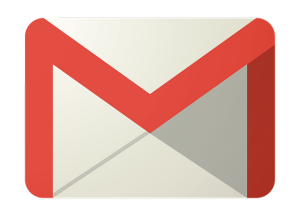
Gmail works great out-of-the-box and if you don't adjust any of the default settings, then you'll enjoy using one of the most powerful and user-friendly email clients on the market today.
But if you're ready to supercharge your email, try making some customizations to the settings discussed in this article. Although it can seem complicated at first, Gmail has many features that can truly make your life much easier and that will allow you to work more efficiently.
Not only are there a plethora of features to use, but there are plenty of features that can truly propel your business to efficiency, which is why so many businesses are switching to G Suite and Gmail professional email from Microsoft and Outlook.
All it takes is a bit of practice, and you will see the value in an organized and labeled Gmail account.
You May Also Like:
Google Calendar 101 - Our Complete Guide
More Gmail Guides & Resources We Love:
What Can You Do with Gmail? - G Suite Learning Center
The Complete Guide to Gmail - How to Geek
The Power User Guide to Gmail - Make Use Of

